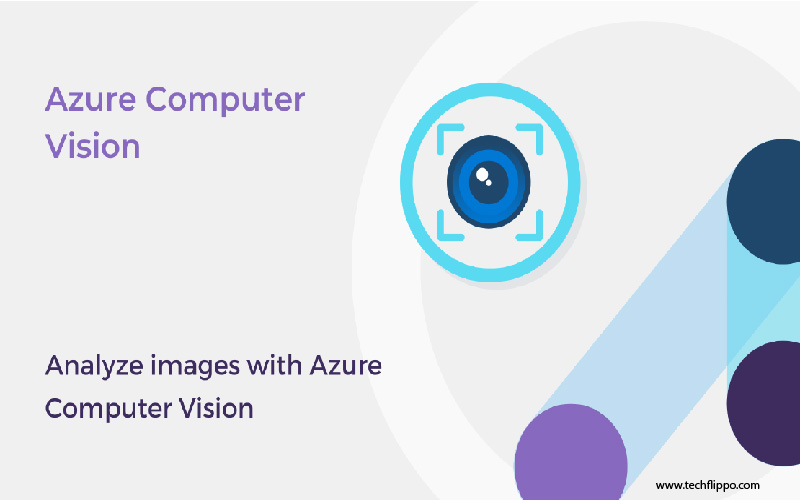Enhancing Your Business with Microsoft Azure Computer Vision Technology
Welcome to the future of business innovation with Microsoft Azure Computer Vision Technology! Imagine a world where your company can harness the power of artificial intelligence to revolutionize how you process and analyze visual data. This groundbreaking technology is not just a concept anymore – it’s a game-changer for businesses looking to enhance efficiency, accuracy, and customer experience. Let’s dive into how Azure Computer Vision can take your business operations to new heights!

Benefits of using Azure Computer Vision for your business
Utilizing Microsoft Azure Computer Vision technology in your business comes with a plethora of benefits that can revolutionize the way you operate. This advanced tool allows for seamless image recognition and analysis, enabling you to extract valuable insights from visual data swiftly and accurately.
Moreover, Azure Computer Vision enhances customer experiences by offering personalized services based on image recognition. This not only boosts customer satisfaction but also increases brand loyalty and engagement. Additionally, automating manual tasks such as document processing through this technology improves operational efficiency and saves time for more strategic initiatives.
Furthermore, the ability to detect objects, faces, text, and even emotions in images opens up endless possibilities for improving marketing strategies and product development processes. By harnessing the power of Azure Computer Vision, businesses can gain a competitive edge in today’s fast-paced digital landscape.
Real-life examples of businesses utilizing this technology
Imagine a retail company using Microsoft Azure Computer Vision to streamline their inventory management process. By implementing this technology, the businesses can accurately track and catalog products in real-time, reducing manual errors and improving efficiency.
In the healthcare industry, hospitals are leveraging Azure Computer Vision for medical imaging analysis. This advanced technology enables healthcare professionals to diagnose diseases more quickly and accurately, ultimately improving patient outcomes.
Additionally, e-commerce platforms are integrating Azure Computer Vision for visual search capabilities. Customers can now simply upload an image to find similar products on the website, enhancing their shopping experience and increasing sales for the business.
From manufacturing to marketing, businesses across various sectors are harnessing the power of Microsoft Azure Computer Vision to drive innovation and stay ahead of the competition.
Step-by-step guide on implementing Azure Computer Vision in your business
Are you ready to take your business to the next level with Microsoft Azure Computer Vision technology? Implementing this cutting-edge tool can revolutionize how you operate and engage with your customers. Here is a simple step-by-step guide to help you seamlessly integrate Azure Computer Vision into your business operations.
First, assess your business needs and goals to determine how Azure Computer Vision can best serve you. Next, sign up for an Azure account and navigate to the Computer Vision service in the Azure portal. Then, create a new resource and configure it according to your specific requirements.
Upload relevant images or videos that you want the system to analyze, and start experimenting with different features such as object detection, image recognition, or optical character recognition. Fine-tune the model based on feedback and continuously optimize its performance for maximum efficiency.
By following these steps diligently, you will unlock a world of possibilities for enhancing productivity, customer experience, and overall success in your business endeavors.

Potential challenges and how to overcome them
Implementing Microsoft Azure Computer Vision technology in your business comes with its own set of challenges. One potential issue could be the complexity of the technology itself, which may require specialized knowledge to fully leverage its capabilities. To overcome this challenge, investing in training for your team or hiring experts in the field can help bridge the gap.
Another challenge businesses might face is integrating Azure Computer Vision seamlessly into existing systems and workflows. This can disrupt operations if not done correctly. To address this, thorough planning and collaboration between IT teams and stakeholders are essential to ensure a smooth transition.
Data privacy and security concerns are also significant challenges when working with sensitive information using Azure Computer Vision. Employing robust encryption methods and staying compliant with regulations like GDPR can mitigate these risks effectively.
Furthermore, scalability issues may arise as your business grows, requiring adjustments to accommodate increased data processing demands efficiently. Regular monitoring and optimization of resources will be key in overcoming this obstacle to ensure optimal performance at all times.
Future developments and advancements in Azure Computer Vision
The future of Microsoft Azure Computer Vision technology is filled with exciting possibilities. As AI continues to evolve, we can expect even more advanced features and functionalities to be integrated into the platform. This means improved accuracy in image recognition, enhanced object detection capabilities, and better text extraction from images.
With ongoing research and development efforts, we can anticipate faster processing speeds and increased efficiency in handling large volumes of data. Additionally, advancements in machine learning algorithms will enable Azure Computer Vision to become even more adept at understanding complex visual content.
Moreover, as cloud computing becomes increasingly prevalent; we can look forward to seamless integration between Azure Computer Vision and other tools within the Microsoft ecosystem. This interoperability will further enhance the overall user experience and make it easier for businesses to leverage the full potential of this cutting-edge technology.
Conclusion: Why your business should consider incorporating this technology
In a world where technology is constantly evolving, staying ahead of the curve can give your business a competitive edge. Microsoft Azure Computer Vision technology offers a wide range of benefits for businesses looking to enhance their operations, improve efficiency, and provide better customer experiences.
By incorporating Azure Computer Vision into your business processes, you can streamline tasks such as image recognition, object detection, text extraction, and more. This not only saves time but also reduces human error and allows your employees to focus on higher-value activities.
Real-life examples have shown how businesses across various industries are leveraging Azure Computer Vision to automate manual processes, enhance security measures through facial recognition systems, improve product quality control with automated inspections, and even create personalized shopping experiences for customers through visual search capabilities.
Implementing Azure Computer Vision in your business may come with its challenges such as data privacy concerns or technical barriers. However, by working closely with experts and following best practices in data management and security protocols, these hurdles can be overcome effectively.
As Microsoft continues to innovate and advance its Azure Computer Vision technology with features like improved accuracy rates, expanded capabilities for different types of images or videos analysis, and seamless integration options with other cloud services – the future possibilities for businesses are endless.
In conclusion, Embracing Microsoft Azure Computer Vision technology is not just about keeping up with trends; it’s about unlocking new opportunities for growth and innovation within your organization. By harnessing the power of computer vision technology from Microsoft Azure – you can transform how you do business and pave the way for success in the digital age.